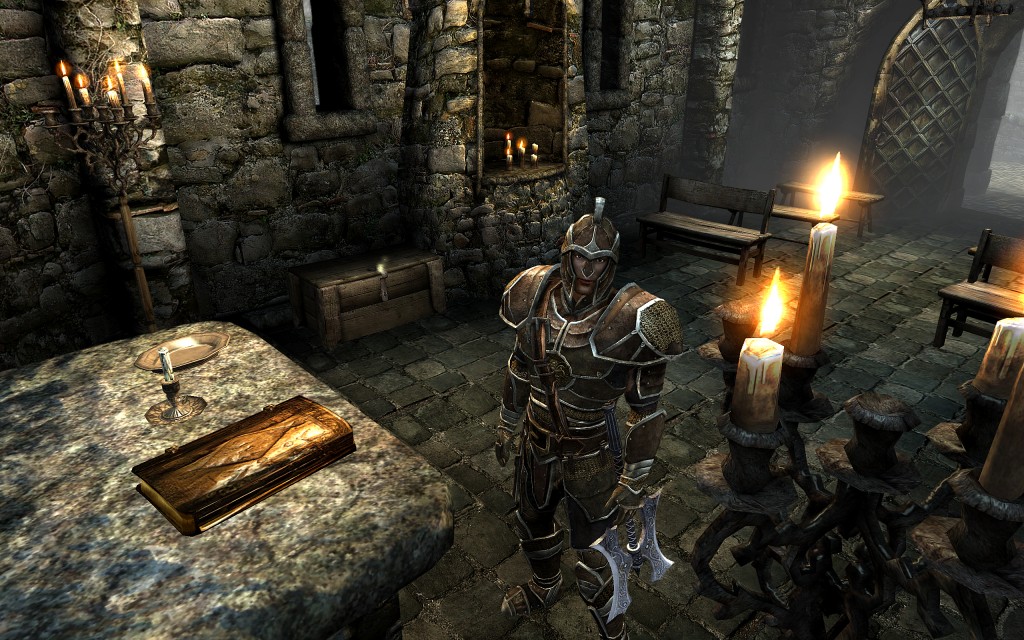 There’s a reason why the “Two Worlds†series has a following on the PC. Anything but linear, the game had so many customization options that any gamer that gives it a chance would find something fun to tinker with. The game was far from perfect on the PC however with accessibility issues that hindered the overall gameplay experience. At times, just navigating your inventory was a chore. It was even worse on the 360.
There’s a reason why the “Two Worlds†series has a following on the PC. Anything but linear, the game had so many customization options that any gamer that gives it a chance would find something fun to tinker with. The game was far from perfect on the PC however with accessibility issues that hindered the overall gameplay experience. At times, just navigating your inventory was a chore. It was even worse on the 360.
The 360 version, in spite of some work to make it more console-friendly, still felt like a PC game, in both appearance and flow. The end result was a game with unrealized potential.
The same thing can be said for its sequel.
Make no mistake, “Two Worlds II†is epic in size and customization. With the ability to create your own weapons and spells, you can play through the game in a myriad of different ways. The graphics are better than the original. At times, the lighting effects are undeniably beautiful and help tell, at times, a pretty interesting story.
Most importantly, regardless of its kinks, the game can be fun at times.
So why does the game end up only slightly better than average?
While the menus have been revamped a bit, it’s still difficult to manage items and with all the barely explained weapon and spell crafting systems, it can be terribly painful to do something as simple as manage your items. At times, it’s a painstakingly annoying process to just navigate the map. Unlike games like Oblivion and Fallout, which make traveling hundreds of miles a snap with an easy and intuitive map system, it’s way too easy to get lost in “Two Worlds II.â€
In a quest-based game, this one aspect nearly sucks all the fun out of the gameplay experience.
At the same time, there are so many combinations of weapons and spells to create that every gamer should give this title a try. Your only restraint is your imagination. However, the tutorials for these gameplay elements are tough to decipher. Had the team at Reality Pump made these modes a bit easier to understand and intuitive, the game would have had much more staying power.
Instead, it continues the trend of the game being a bit too heady for its own good.
Graphically, the game has some hiccups at times too that rob the serenity from the otherwise excellent visuals. At the same time, it must be said that if you are planning to purchase or play this game, a flat-screen LCD TV is a must. On a standard definition TV, the text is entirely too small and lacks the contrast needed to accurately read everything from in-game texts to the number of items you carry. On a LCD however, the game is pristine and easily one of the better-looking action-RPGs on the system.
Nevertheless, you’ll notice throughout the course of the game that some of the animations are a bit choppy, as well as the cinemas, which make the characters look like they are in a “Godzilla†film. It’s not a big grievance, but ultimately it’s another blemish on a game that needs a bit more polish.
Had “Two Worlds II†been a bit more approachable and cleaned up, it could have been a memorable title. At this point though, its legacy is just like the game itself, overtly complicated. Judged by the sum of its parts alone, this game should be solid. The graphics, sound and hours of gameplay are a huge selling point and one that should not be understated.
But for some reason, the over-complicated menu and creation modes, in addition to the kinks that pop up along your journey, rob the game of an orc-bite-sized portion of the fun and make the game something you won’t mind missing.


Leave a Reply